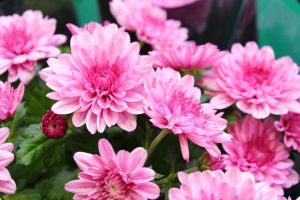Whether you have dappled sunlight filtering through tall trees or areas that stay cool and shadowy for extended periods, there are many stunning shrubs to consider for your garden. This in-depth guide will walk you through some exceptional flowering shrubs that thrive in shade and offer stunning blooms, attractive foliage, and year-round interest.
Oakleaf Hydrangea (Hydrangea quercifolia)
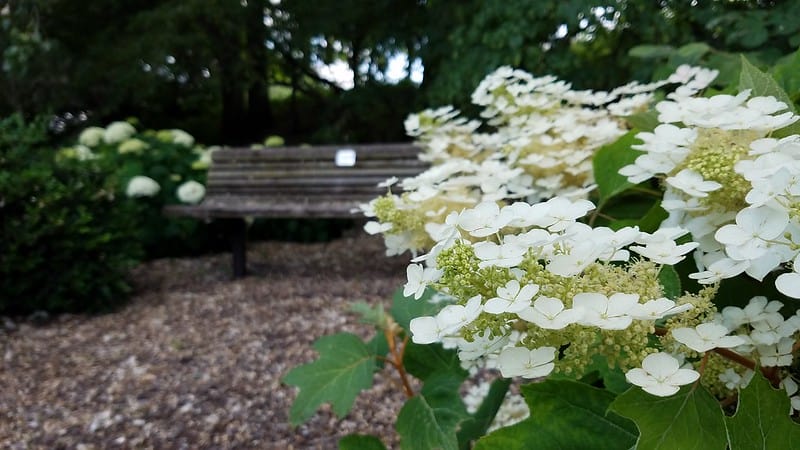
The Oakleaf Hydrangea is a deciduous shrub that adds a rustic charm to shaded areas. Renowned for its unique lobed leaves, this hydrangea exhibits a rich texture that is visually striking, especially in the fall when the foliage turns vivid shades of burgundy, orange, and yellow. One of its standout features is the large, cone-shaped flower clusters that bloom in summer, displaying a creamy white color that gradually changes to pink as the season progresses.
This shrub prefers moist, well-drained soil and can tolerate partial to full shade, making it a great choice for those challenging spots in your garden. Furthermore, the Oakleaf Hydrangea is relatively low-maintenance, requiring only pruning after flowering to maintain its shape and promote new growth. If you’re looking to plant a prominent shrub that marries beauty and practicality, the Oakleaf Hydrangea is an excellent choice.
Japanese Skimmia (Skimmia Japonica)
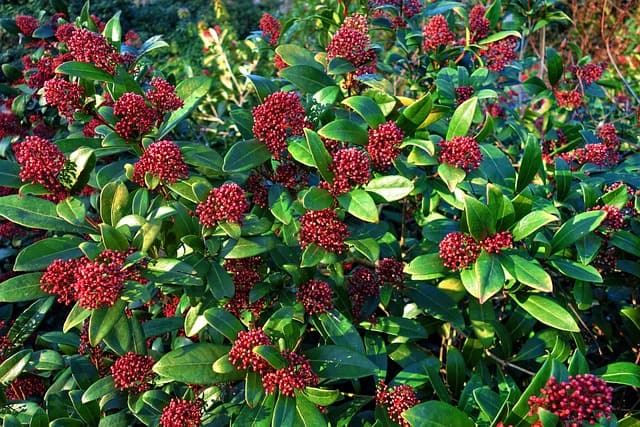
Japanese Skimmia is a compact evergreen shrub that brings year-round interest to shady corners of your garden. Its glossy green leaves provide an attractive backdrop for the clusters of fragrant white flowers that emerge in spring. Not only are the flowers beautiful, but they also attract pollinators, making it an ecological asset for your yard.
The fruit of the Japanese Skimmia is another delightful feature, as the red berries that develop in the fall can persist through the winter months, offering splashes of color when the rest of the garden is asleep. Ideal for partial to full shade, this shrub thrives in acidic to neutral soils. Its compact size—averaging about 3 to 4 feet in height—makes it perfect for borders, foundation plantings, or even containers.
Virginia Sweetspire (Itea virginica)
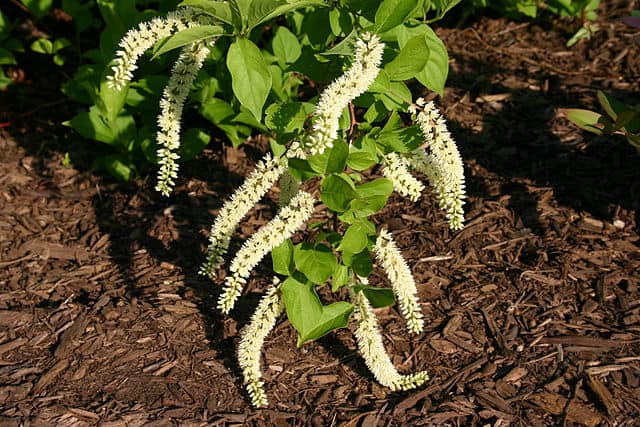
Virginia Sweetspire is an underappreciated gem that thrives in low-light conditions while providing stunning seasonal displays. This deciduous shrub features fragrant white flowers that hang in elegant racemes from late spring to early summer. The delightful scent is a bonus, attracting insects and providing a sensory experience in your garden.
What makes Virginia Sweetspire truly special is its stunning foliage. In the fall, the leaves transition to vibrant hues of red and orange, ensuring that even as many plants begin to decline, your garden remains lively. This shrub tolerates wet soils and is often used in rain gardens, where its beauty is matched by its functionality. With a height of about 3 to 5 feet, it can form attractive hedges or stand alone as a focal point.
Japanese Aralia (Fatsia japonica)

If you’re looking to add a tropical feel to your shaded garden, consider the Japanese Aralia. This evergreen shrub is distinguished by its large, palmate leaves that can reach up to a foot wide, bringing a lush, dramatic presence to any landscape. In the fall, it showcases clusters of small, creamy white flowers, followed by black berries that attract birds.
The Japanese Aralia prefers rich, well-drained soil and tolerates a variety of light conditions, including deep shade. Its ability to grow up to 6 feet tall makes it an excellent choice for creating a natural privacy screen. With its striking foliage and unique growth habit, the Japanese Aralia adds an exotic flair to any garden.
Bottlebrush Buckeye (Aesculus parviflora)
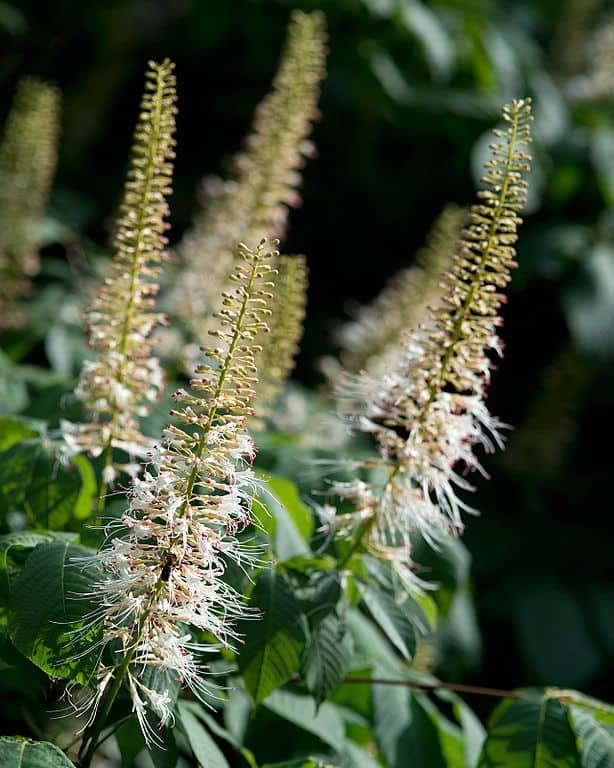
The Bottlebrush Buckeye is a standout shrub known for its unique floral display. The creamy white blossoms, which appear in large, upright clusters in mid-summer, resemble the shape of a bottlebrush, attracting hummingbirds and butterflies alike. This deciduous shrub typically grows to a height of 6 to 12 feet and prefers rich, moist soils, thriving in full to partial shade.
Beyond its stunning flowers, the Bottlebrush Buckeye presents beautiful, palmate green leaves that turn a vibrant yellow in the fall, providing additional seasonal appeal. This attractive shrub works well in informal landscapes and is ideal for naturalizing in woodland gardens.
Deutzia (Deutzia gracilis)
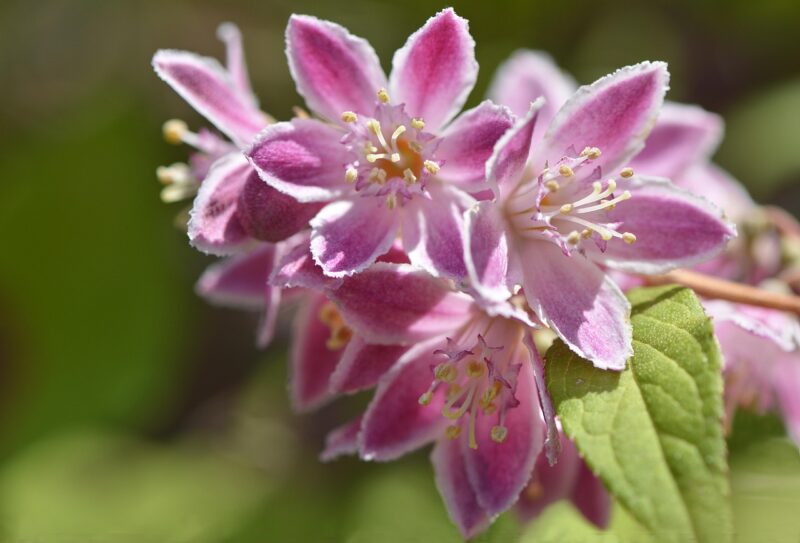
Deutzia is an elegant, flowering shrub that is often overlooked in favor of more popular species. However, its delicate white or pink blooms, which erupt in late spring, are undeniably charming. The blossoms typically cluster along the stems, creating a striking display against the lush green foliage. This deciduous shrub generally grows to about 3 to 4 feet high and can thrive in part shade, making it a valuable addition to shaded gardens.
Deutzia is quite adaptable to various soil types, though it prefers well-drained soil. Its relatively low maintenance requirements—occasional pruning to promote airflow and shape—make it an ideal choice for both novice and experienced gardeners. This shrub can serve beautifully as part of a mixed border or as a delightful standalone specimen.
Cherry Laurel (Prunus laurocerasus)
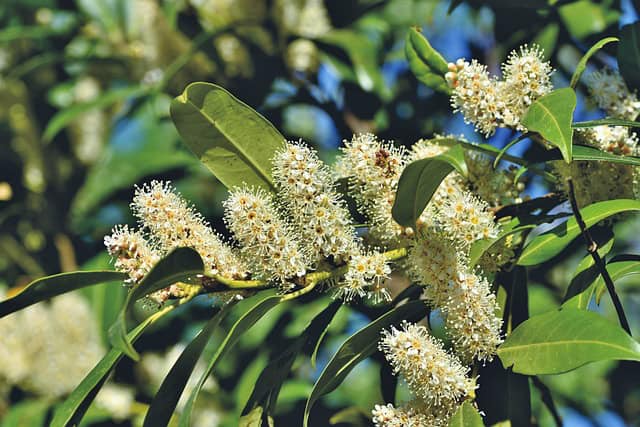
Cherry Laurel is an evergreen shrub that excels in providing privacy and structure in shaded gardens. Known for its dense growth habit and glossy, dark green leaves, this versatile plant can be pruned into a formal hedge or allowed to grow naturally for a more relaxed appearance. In spring, Cherry Laurel produces creamy white flower spikes, adding subtle beauty to the landscape.
This shrub is not only easy to grow but also drought-tolerant once established. Its ability to thrive in various lighting conditions—from partial shade to almost full shade—makes it ideal for those tricky garden areas. With a height of up to 10 feet, it serves as an excellent backdrop for shade-loving perennial flowers and ferns.
Hydrangea (Hydrangea macrophylla)
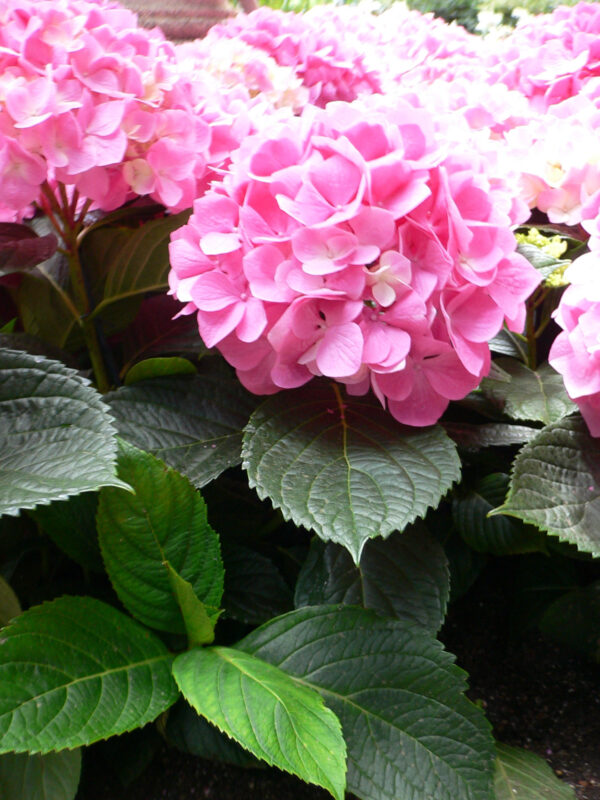
No discussion of flowering shrubs is complete without mentioning the iconic Hydrangea macrophylla. Often referred to as the mophead or lacecap hydrangea, its large blooms create a stunning focal point in any garden. Blooming in various colors—ranging from pink and blue to white—these hydrangeas adapt their hue based on soil pH, making them a fascinating choice for gardeners interested in color variation.
These shrubs thrive in partial to full shade, preferring a consistently moist, well-drained soil. Their lush foliage contrasts beautifully with the large blooms, providing visual interest throughout the growing season. With cultivars ranging in size, from compact varieties reaching about 3 feet to larger forms hitting 6 feet or more, you have the flexibility to choose one that fits your space perfectly.
Fuchsia
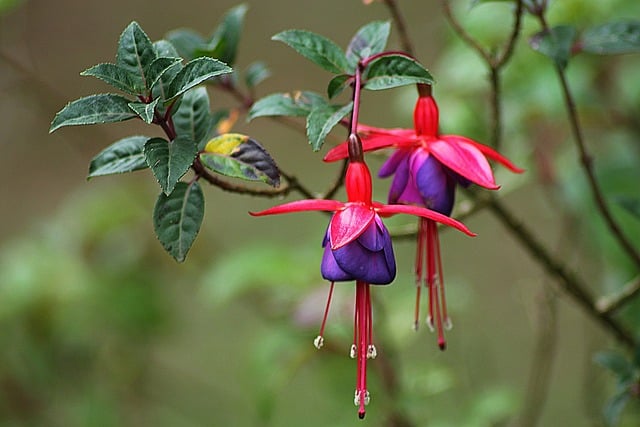
Hardy Fuchsia is another enchanting flowering shrub that brings a touch of whimsy to shady areas of your garden. Featuring drooping, tubular flowers that come in a delightful array of colors—from purples and reds to pinks—these blooms attract hummingbirds, making them a joy to observe during the growing season. Hardy fuchsia can grow to about 2 to 5 feet tall, depending on the variety, and prefers moist, well-drained soils in partial to full shade.
The unique shape and vibrant colors of Hardy Fuchsia provide an excellent contrast against dark green foliage, creating a stunning visual experience in shaded parts of the garden. Additionally, their ability to thrive in cooler climates adds to their appeal for northern gardeners looking to fill their gardens with color.
Tree Peony (Paeonia suffruticosa)

For those who desire grandeur in their garden, the Tree Peony is an outstanding shrub that produces some of the most lavish blooms you can find. The large, fragrant flowers can be as big as dinner plates and come in an array of stunning colors, including soft pinks, yellows, and deep reds. Flowering in late spring to early summer, these majestic blooms make a dazzling statement.
Tree Peonies prefer a well-drained yet moist soil, and while they can tolerate some shade, they thrive best in partial sunlight. Growing to a height of about 3 to 7 feet, they require little maintenance beyond careful pruning to shape the plant and encourage airflow. Their beautiful blooms and sturdy presence make them a central piece in any shaded landscape.
Glossy Abelia (Abelia x grandiflora)
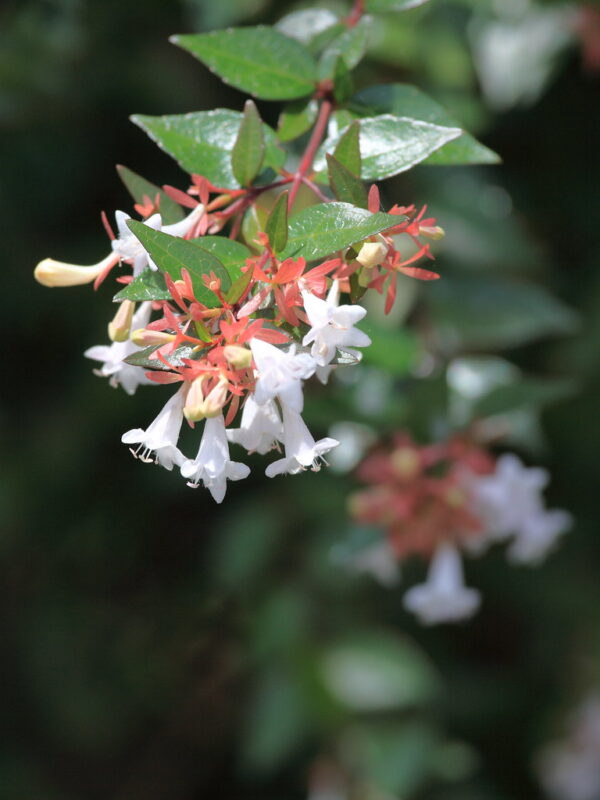
Glossy Abelia is a semi-evergreen shrub that provides a lasting impact with its elongated, glossy green leaves and delicate, tubular flowers. In summer and fall, it produces clusters of white to pale pink flowers that attract butterflies and pollinators, making it a wonderful addition to nature-friendly gardens. Typically growing to about 3 to 6 feet tall, this shrub adapts well to a range of light conditions, including partial shade.
The enthusiastic blooming period and ability to thrive in a variety of soil types make Glossy Abelia a favorite among gardeners. Its dense, loosely arching growth habit can create a lovely hedge or border when planted en masse, filling your shaded areas with color and life.
Camellia
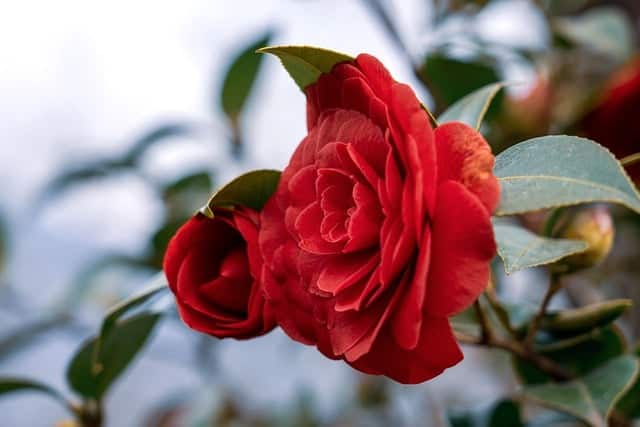
For anyone looking to add elegance and a refined touch to their shaded garden, the Camellia is hard to beat. This evergreen shrub is adored for its striking flower display, which can range from opulent pinks and whites to deep reds. The blooms often occur in late winter to early spring, bringing a welcome pop of color to an otherwise dreary time of year.
Camellias thrive in rich, well-drained, acidic soil and are typically happy in partial to full shade, making them ideal for those darker spots in the garden. With sizes that can vary widely—from small compact forms around 2 feet to towering varieties that can reach up to 15 feet—there’s a Camellia to suit almost any need.
Garland Flower (Daphne cneorum)
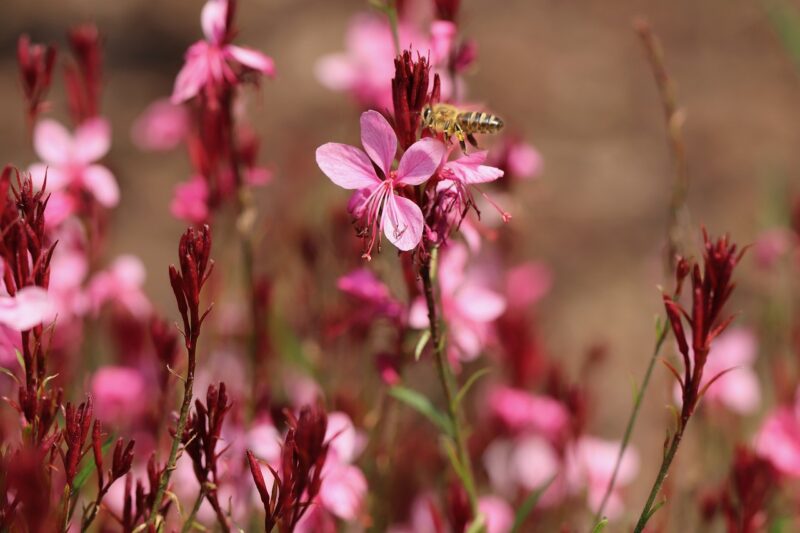
The Garland Flower is a charming and fragrant option for shaded gardens. With compact growth up to 2 feet tall, this semi-evergreen shrub features small, tubular flowers that bloom in late spring to early summer. The blooms are not only beautiful but also emit a delightful fragrance that enhances the garden’s sensory experience.
Daphne prefers well-drained, slightly alkaline to neutral soil and grows best in partial to full shade. Although it’s low-maintenance, this plant is somewhat particular about its growing conditions, which adds to its uniqueness. The Garland Flower is often used in borders or as a lovely ground cover in shaded areas, where its beauty can be fully appreciated.
Azalea
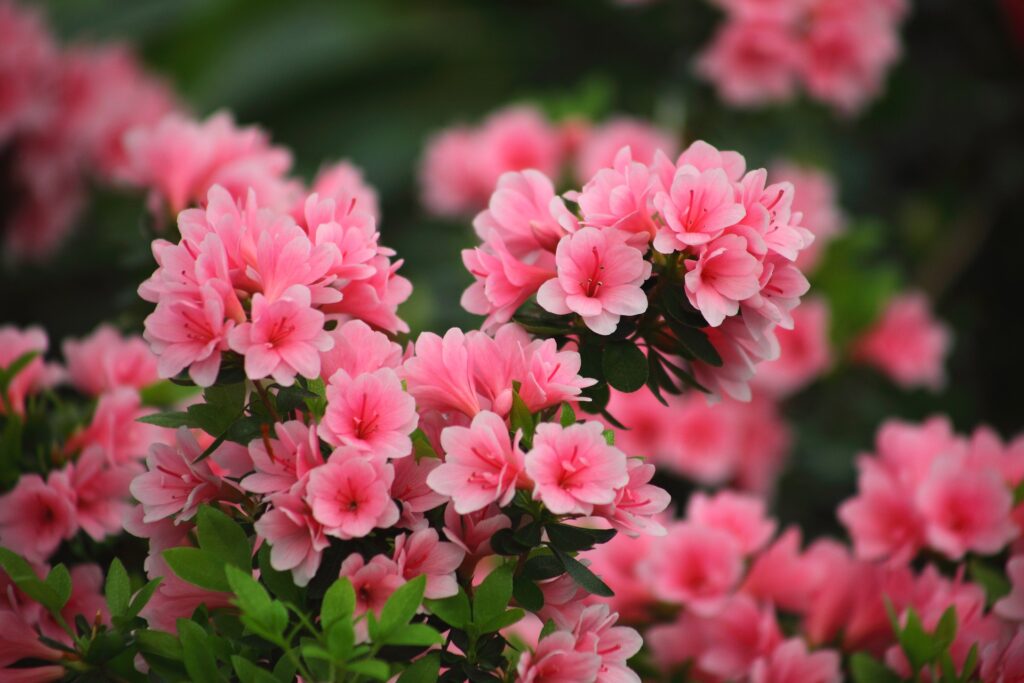
Azaleas are celebrated for their breathtaking spring blooms, making them some of the most cherished flowering shrubs for shaded gardens. With a tremendous variety of colors and forms, azaleas can cater to every taste, from the classic red and white to striking bi-color blooms. Flowering in spring, they bring a spectacle of color that brightens up darker garden corners.
These shrubs prefer acidic, well-drained soil and thrive in partial shade, protecting them from the harsh midday sun. Ranging in size from compact miniatures to larger varieties, azaleas can fit into almost any landscape design. With minimal maintenance—occasional pruning and mulch for moisture retention—they make a fantastic addition to any shade garden.
Rhododendron
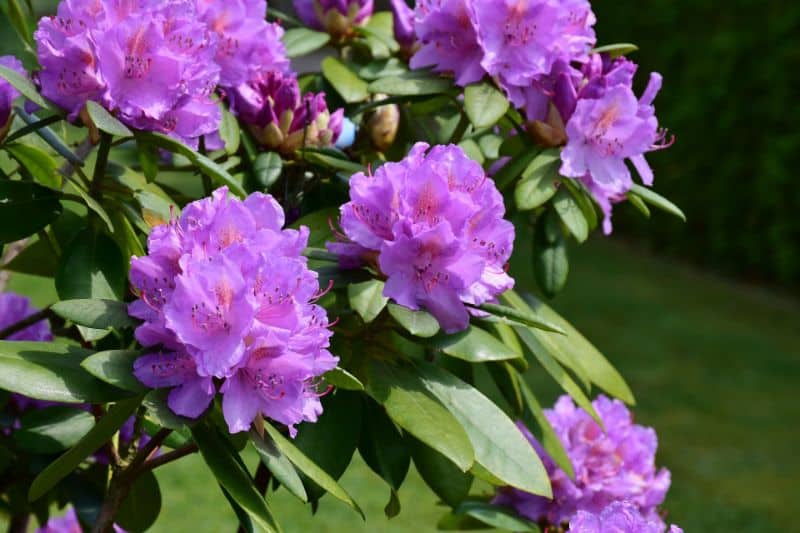
Closely related to azaleas, rhododendrons are another stunning group of shrubs that elevate shaded gardens. Known for their large and often showy clusters of flowers, which bloom in vibrant colors and sizes, they provide a magnificent display in spring. The leathery leaves add a vertical presence, remaining evergreen through the winter to maintain the garden’s structure.
Rhododendrons prefer acidic, well-drained soil and thrive in partial to full shade. They are generally larger than azaleas, with some species reaching up to 15 feet tall, making them ideal for creating a substantial focal point in your garden. Their ability to survive in low-light conditions and their stunning blooms make rhododendrons a must-have for anyone looking to enhance a shaded area.
St. John’s Wort (Hypericum densiflorum)
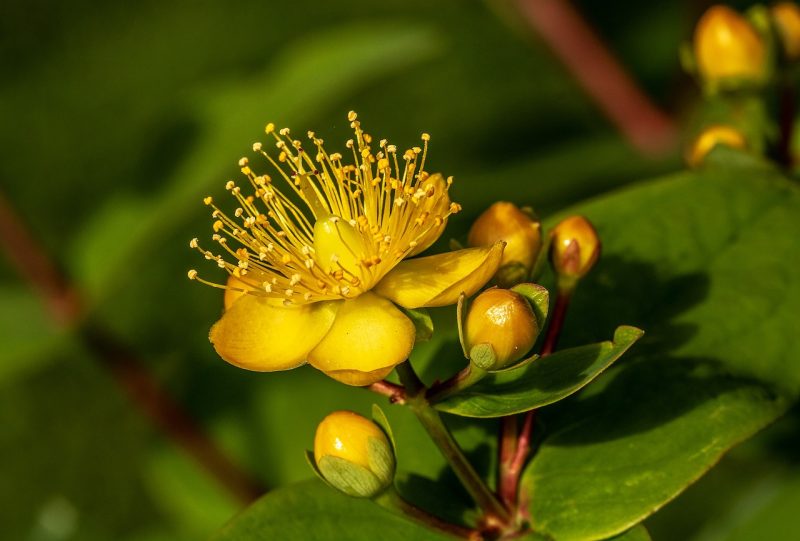
St. John’s Wort might not be the first name that comes to mind when selecting flowering shrubs for shade, but this perennial shrub is beautifully suited for shaded environments. With cheerful yellow flowers that bloom in mid-summer, it provides a soft yet vivid touch to your landscape. The shrub also has a tolerable growth habit, generally reaching about 3 feet tall.
St. John’s Wort is surprisingly hardy, adapting well to various soil types, including sandy or clay soils. Its blooms are not only pretty; they are known for their medicinal properties historically, often associated with natural remedies. This shrub can serve beautifully as a background planting or mixed with other perennials while also contributing a burst of sunshine in shaded corners.
Mountain Laurel (Kalmia latifolia)
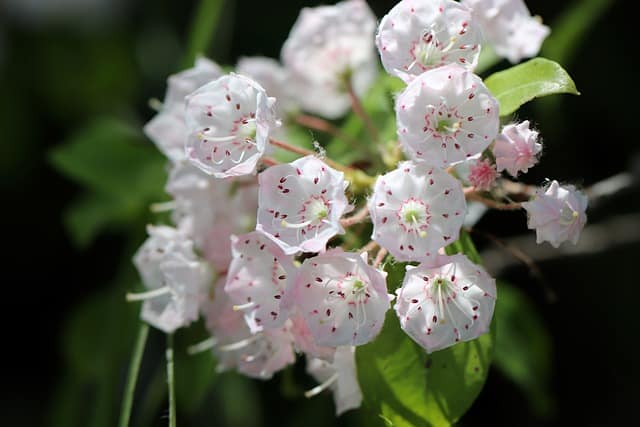
Mountain Laurel is an exquisite flowering shrub that brings elegance and beauty to shaded areas. Renowned for its stunning clusters of pink and white blooms, Mountain Laurel typically blooms in late spring, offering a lovely display against its deep green foliage. This evergreen shrub prefers acidic, well-drained soil and thrives in partial shade to dappled sunlight.
Growing around 5 to 15 feet in height, Mountain Laurel is ideal for woodland gardens or as a specimen plant. Its unique, cup-shaped flowers are not only beautiful but also attract butterflies, adding vibrancy to your garden ecosystem. Its graceful form and flowering attributes make it a treasured choice for shade gardens.
Dwarf Japanese Pieris (Pieris japonica ‘Cavatine’)

If you’re looking for an exquisite compact shrub that thrives in shade, look no further than Dwarf Japanese Pieris. This evergreen shrub is particularly valued for its early spring blooms, which appear in cascading clusters of delicate white or pink flowers. The new foliage emerges with a stunning reddish tint, gradually maturing to dark green, providing year-round interest.
Preferring acidic soils, Dwarf Japanese Pieris flourishes in partial to full shade, making it ideal for woodland settings or as an accent in front of larger plants. Its compact height of around 2 feet allows for versatility in design; this plant can be used in borders, containers, or as part of a mixed planting scheme.
Japanese Mahonia (Mahonia japonica)

Japanese Mahonia is a hardy shrub that often catches gardeners by surprise with its ability to produce vibrant yellow flowers in late winter to early spring, just as other plants remain dormant. The foliage, with its spiky, holly-like appearance, adds a distinct texture to the landscape. The blooms give way to blue-black berries that attract birds, enhancing the ecological value of your garden.
This shrub thrives best in shady spots with well-drained soil and can reach heights of up to 6 feet. Its capacity to provide year-round interest—from flowers to foliage—makes Japanese Mahonia an outstanding choice for shaded garden nooks.
Oregon Grape Holly (Mahonia aquifolium)
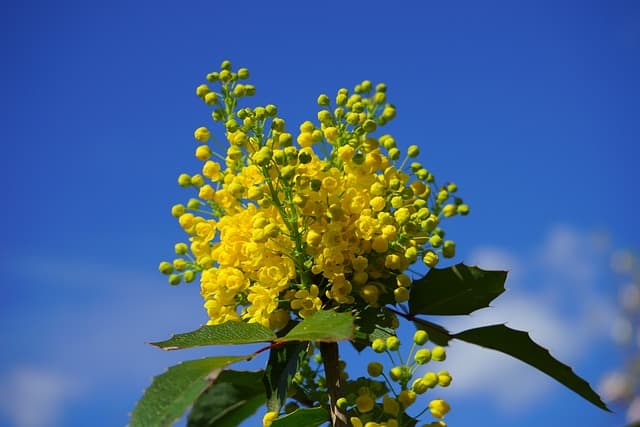
Another beautiful member of the Mahonia family, Oregon Grape Holly, is a versatile shrub that thrives in partial to full shade. Its evergreen, holly-like leaves offer a striking contrast to its bright yellow spring flowers. As the flowers fade, they yield dark blue berries that are edible and attract wildlife, particularly birds and other pollinators.
This shrub typically grows to about 3 to 6 feet and tolerates a range of soil types, making it forgiving for gardeners. Its distinctive foliage, coupled with its seasonal floral displays and berry production, makes it a worthy addition to any shaded garden.
Witch Hazel (Hamamelis spp.)
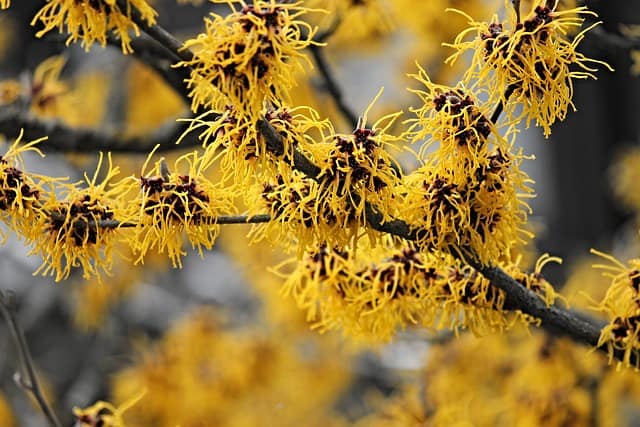
Witch Hazel is a unique flowering shrub well-known for its captivating winter blooms. Emerging in late winter to early spring, the spidery yellow or orange flowers provide a lovely contrast against the stark backdrop of winter. Its fragrance is intoxicating, offering a sweet scent that fills the air.
Witch Hazel prefers moist, well-drained soil and thrives in partial shade. Growing 10 to 15 feet tall, it can serve as a stunning specimen plant or a natural privacy barrier. Its unusual flowering time, coupled with its colorful foliage in the fall, means this shrub adds continuous interest to your garden throughout the seasons.
Viburnum
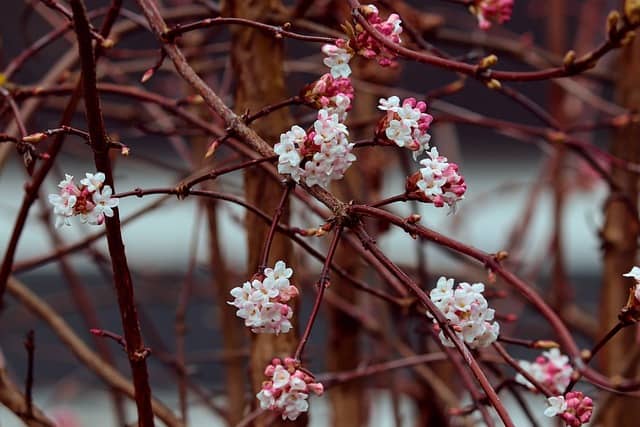
Finally, we arrive at Viburnum, a versatile group of flowering shrubs that come in many species and cultivars suitable for shaded gardens. Viburnums produce stunning clusters of white, pink, or red flowers, depending on the variety, and many are known for their intoxicating fragrances that linger in the air during the blooming season.
These shrubs vary in size, ranging from compact forms of about 3 feet to larger, sprawling varieties reaching up to 15 feet in height. They adapt well to partial shade and typically prefer well-drained soils. In addition to their beautiful flowers, many Viburnum species produce attractive berries in the fall, offering seasonal visual interest and providing food for birds.



